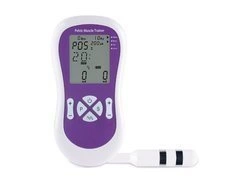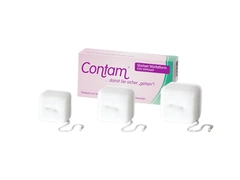Organ prolapse. Where does it come from and how to recognize them?

Organ lowering is one of the stages of disturbance of the statics of a given organ or other adjacent to it. With the correct tone of the pelvic floor muscles and ligaments, there is a bladder in front of the pelvic bone just behind the pubic bone. Right above it - the uterus. In contrast, on the back - the rectum. When the ligaments and fascia that support the pelvic organs lose their elasticity, the pelvic diaphragm lowers, which may lead to the fallout (prolapse) of the uterus, bladder or rectum. These organs, apart from their own suspending mechanisms, are also related to each other, so the falling (falling out) of one of them may result in another ligament or fascia connected to it.
It is recognized that in 95% of cases, the decrease in organs is due to a weakened pelvic floor, which may appear after pregnancy and childbirth, as a result of excessive physical strain and bad habits.

BLADDER FALLING (CISTOCELS)
One type of prolapse is Cystocele, or bladder depression, i.e. a situation in which the bladder leaves its natural position and partially descends into the vagina, deforming it from the front. This type of fall can be temporary when we react quickly enough. In most cases, first degree bladder descent, properly selected and systematic exercise, and the elimination of harmful movement habits during daily activities are usually sufficient.
The first symptoms of bladder prolapse are a heaviness in the pelvis or vagina. This ailment can be detected in most cases during a standard gynecological examination.
The causes of bladder collapse include pregnancy and childbirth, overweight, frequent constipation, and intensive exercises that load the pelvic floor muscles, such as running, tennis, and squash.
UTERINE FALLING (PROLAPSUS)
Prolapsus is, in other words, the lowering of the uterus, which goes down to the vagina, deforming it from the top. Often, women are not aware of the emergence of a problem, because the changes are asymptomatic in the initial stage. On the other hand, symptoms appearing at a later stage, such as pain in the lower abdomen and the lower back, the feeling of overflow of the urinary or sexual system, a feeling of pressure, as well as defecation disorders, are not associated with this abnormality.
Uterine prolapse may occur when:
damage to the support and suspension apparatus
damage to the pelvic and labia nerves
changes in the structure of connective tissue (tissue laxity)
The above conditions can occur during childbirth, as well as with heavy physical work that requires lifting, working in a standing position, chronic cough, or changes in a woman's body during menopause.
RECTANGLE FALLING (RECTOCELS)
It's time for the last of the organs mentioned above. Rectum. Its fall is known as Rectocele. The reasons why some women suffer from rectal prolapse are not entirely clear. However, there are some common reasons to keep in mind:
childbirth, during which the ligamentous attachments of the pelvic organs may rupture
chronic constipation - repeated pressures that are exerted during constipation can weaken the perineum
hormonal changes - similar to uterine prolapse, occur mainly during menopause and weaken the tissues of the pelvic floor muscles
A person suffering from rectal prolapse experiences increasing soreness during bowel movements, as well as itching, tense or faecal incontinence. Often these symptoms are not related to organ prolapse.
WAYS TO HELP
Depending on the severity of your symptoms, you can choose different forms of treatment. Drooping of the bladder, uterus and rectum can be treated with rehabilitation. First of all, you need to be aware of how your pelvic muscles are working. Pelvic floor muscles exercises will strengthen the vaginal wall and allow the organs to be better held in their correct position. There are many effective, clinically proven solutions that will motivate you to work and allow you to achieve the results you want. Most importantly, they are not only reserved for postpartum women or for menopausal women. Strengthening the pelvic floor muscles often avoids surgery to treat ptosis. You can choose a therapy under the supervision of a specialist or use the available tools that will allow for comfortable training in the comfort of your home.
You can use solutions such as:
- pelvic floor electrostimulators
- devices with biofeedback
- equipment for manual exercises
Remember! If the stage of falling (prolapse) is advanced, it requires consultation with a specialist who will assess the condition of organs, ligaments and fascia and indicate the best treatment. If you have suspicions of organ ptosis after reading this article, make an appointment with a specialist to advise you on the appropriate treatment.
When the problem does not concern you, it is very good! In order to avoid these unpleasant ailments in the future, remember about prophylaxis. It is worth implementing the principles of a healthy lifestyle and proper habits in everyday activities.


















